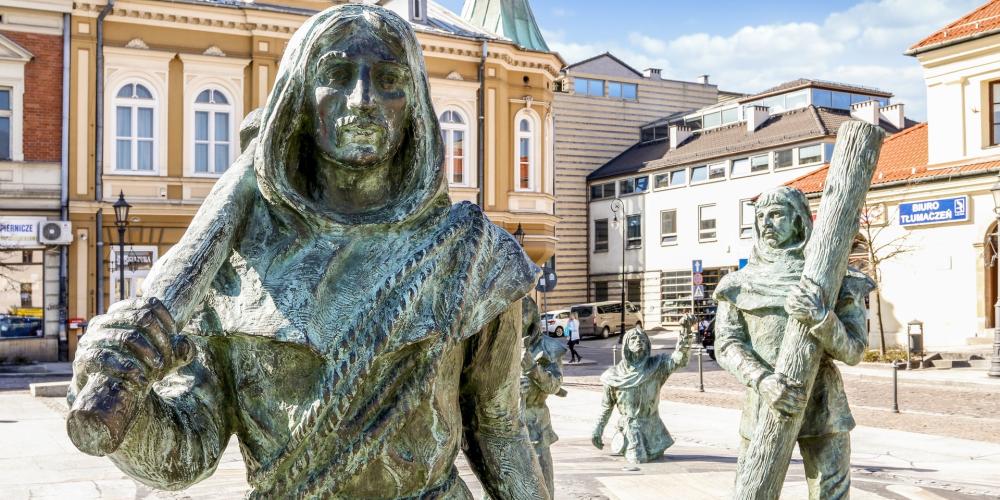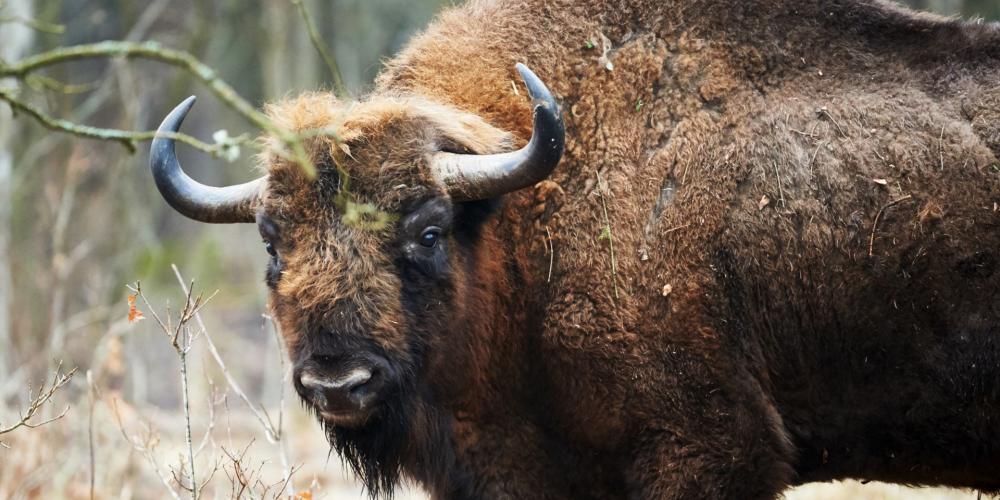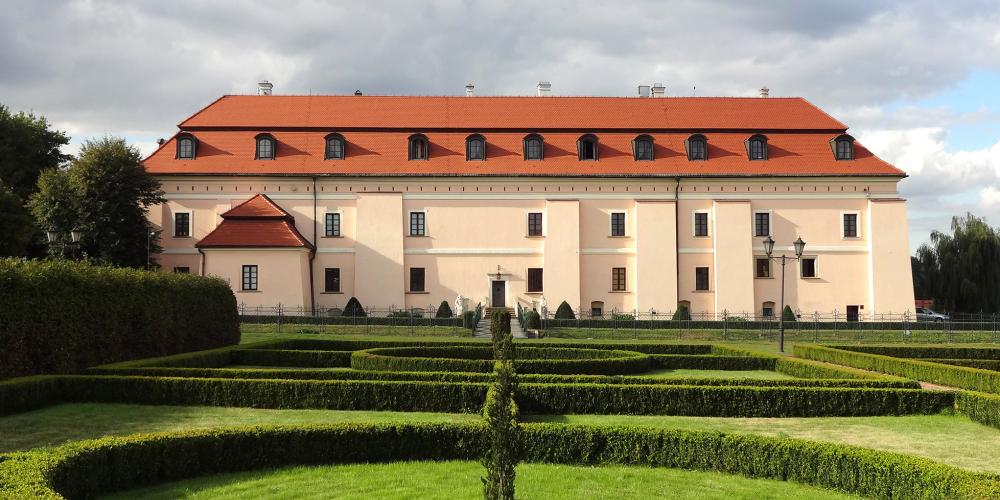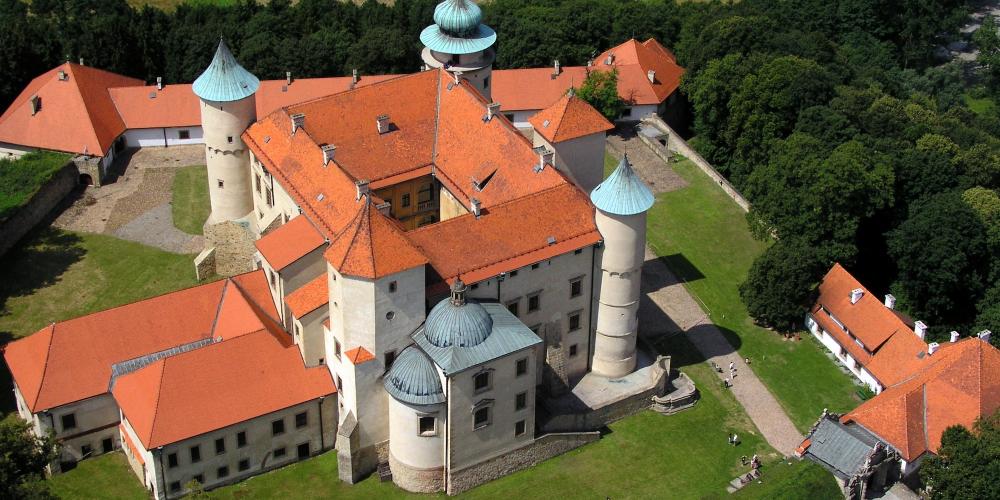Walking Tours in Wieliczka, Niepołomice, Bochnia, and Nowy Wiśnicz

Wieliczka is an interesting and charming town to explore after visiting the salt mine. Behind the Daniłowicz Shaft, visitors are intrigued by the Park of St. Kinga and a complex of mine facilities, including a new, magnificent Graduation Tower, the former saline baths—renovated as Grand Sal Hotel, modern saltworks that produce the best evaporated salt in Poland, the Salt Mill and the extended building of the 19th century Shaft of St. Kinga.
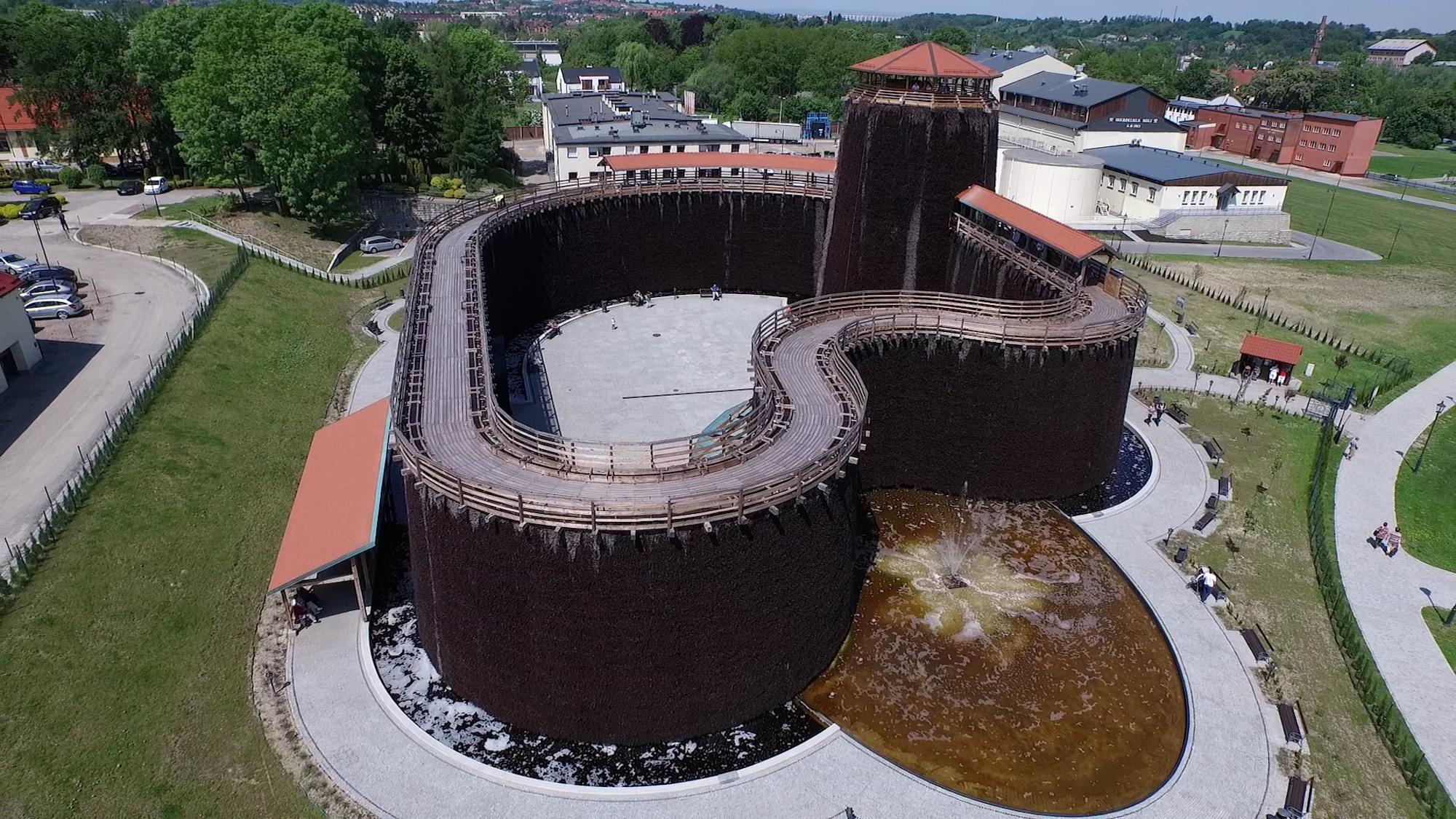
Across the street from the Saltworks Castle, is the neo-Baroque Church of St. Clemens, which is worth entering to see the figures of the holy patrons of miners and epitaphs of town residents honoured for their work for the Saltworks. Behind the church is the newly-renovated Regis Shaft—the oldest one in town.
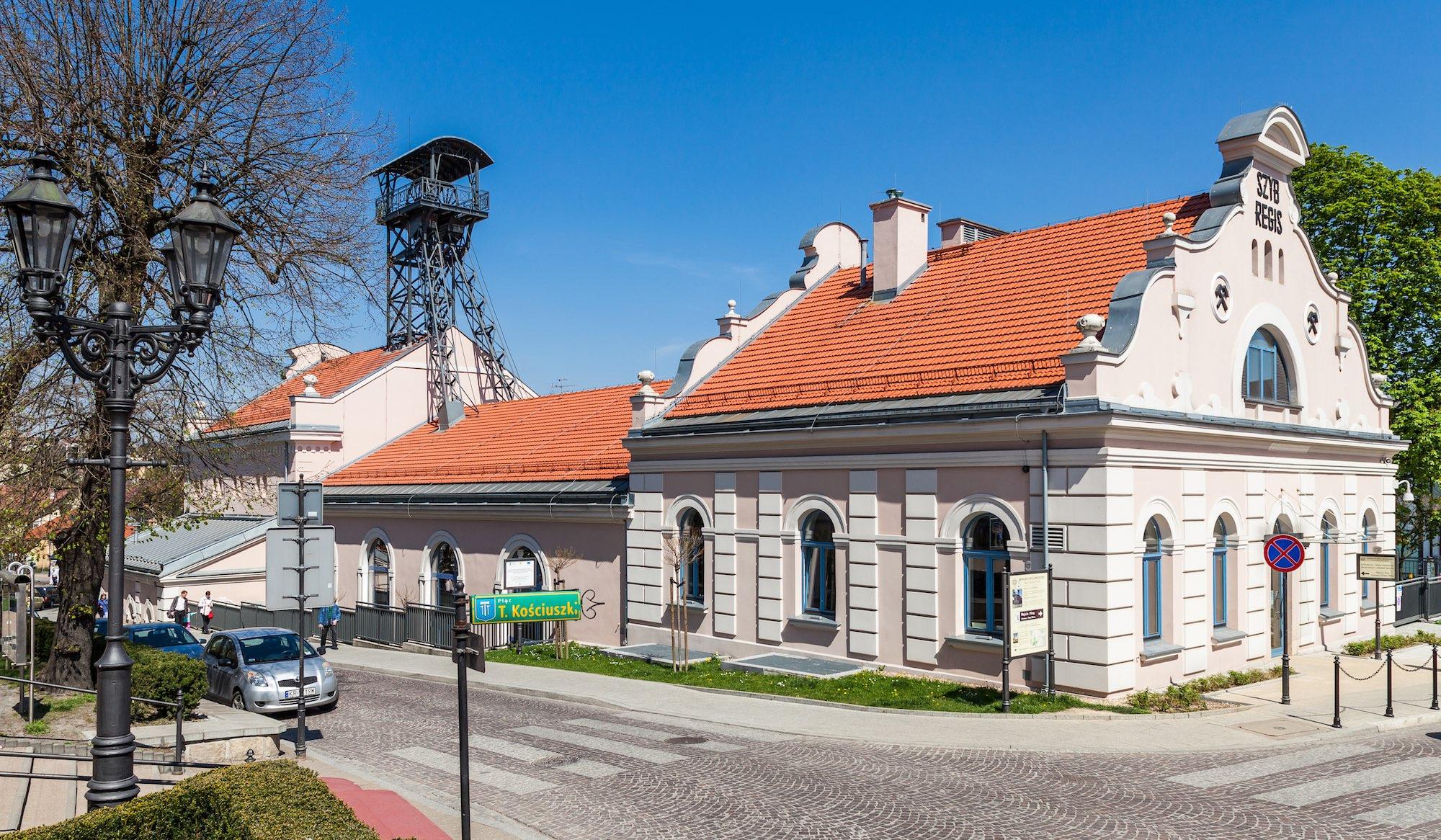
Nearby, behind the park, is the neo-Gothic Foreman's House, the former seat of the Saltworks Museum, the Mining School, and Town Hall. After visiting those sites, go to the city centre to see the Upper Market Square, which is dominated by Przychocki Palace—one of three Wieliczka palaces. Market Square features four bronze figures of miners and an intriguing Trompe l'oeil painting that gives the illusion of peering into the mine below.
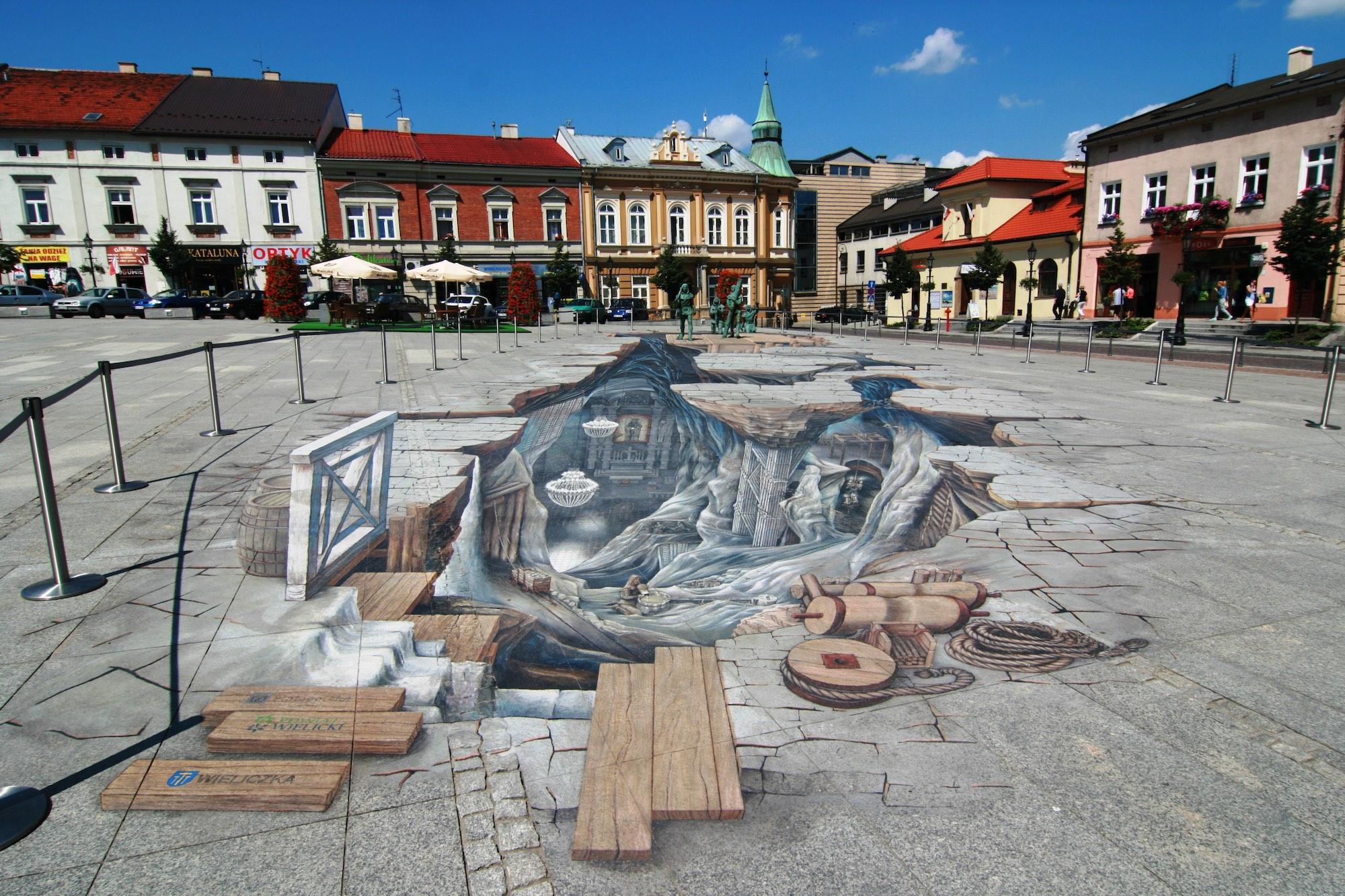
The charming town of Niepołomice is 14 kilometres from Wieliczka. The forest on the outskirts of town was a favourite hunting ground of Polish kings for many ages. Niepołomice Forest is a beautiful, mixed forest with many protected plant and fungi species. You can also see roe-deer, deer and boars here, but the king of the forest is the bison, the largest mammal of Europe. For almost 100 years, the European Bison Breeding Centre has been operating in the Forest. The Centre takes care of the protection of the bison species, threatened with extinction. Only about 5,000 European bison live around the world, 30 of them in the Niepołomice Forest.
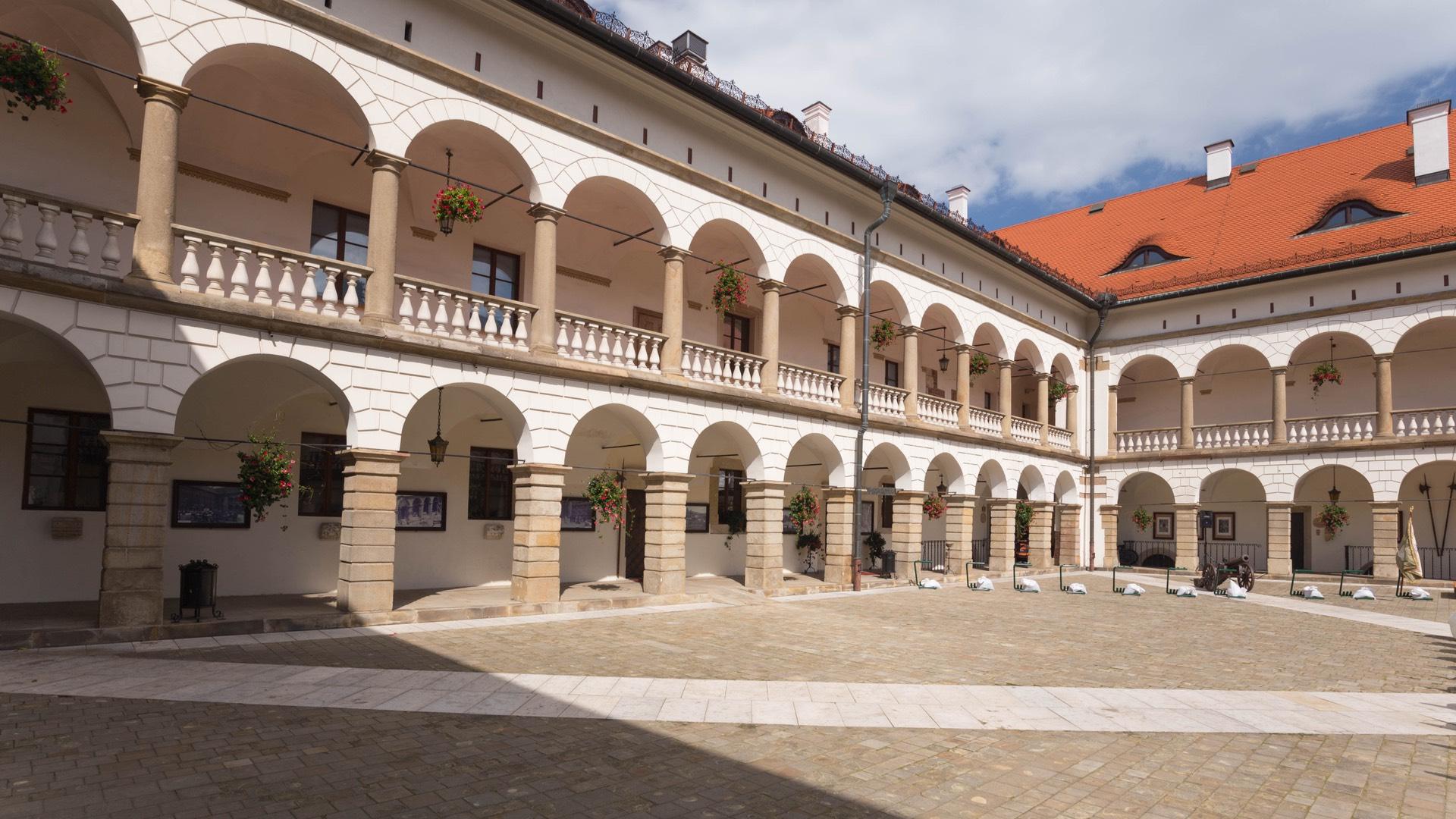
From the Niepołomice Forest, it is only 20 kilometres to Bochnia—another mining town, and one of the oldest towns in Małopolska, having received its municipal charter in 1259. Apart from the salt mine, it is also worth seeing the Gothic Basilica of St. Nicolas from the 15th century and the Chapel of St. Kinga with its interesting altar painting featuring the princess young and beautiful. Next to the Basilica is an original wooden bell tower from the 18th century, and a block away is the Market Square surrounded by lovely town houses and the Sutoris Shaft from the 13th century.
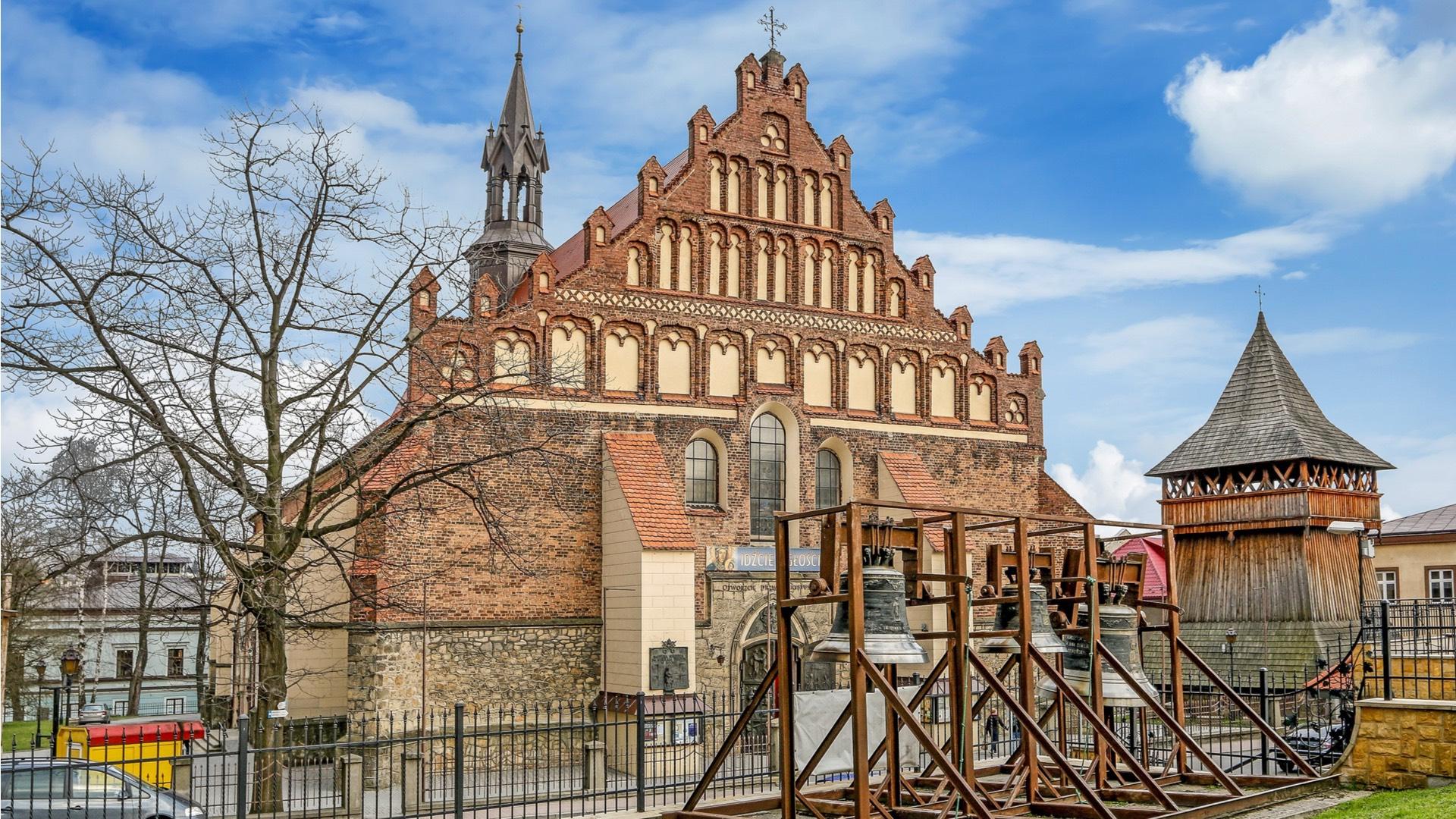
The town of Nowy Wiśnicz is seven kilometres south of Bochnia, where one of the largest strongholds of the former Republic of Poland. Its 14th century castle belonged to a succession of Polish magnate families, but saw its heyday in the 17th century when it was owned by the Lubomirski family—wealthy salt traders—who transformed it into a magnificent Renaissance and Baroque residence. You'll be impressed with the castle's corner donjons, bastion-like fortifications, courtyards and gardens, a grand ballroom and the Lubomirski family crypt. The terrace provides a spectacular wiew of the Beskidy Mountains. You can also go to the underground and follow the "Bat Route" and travel back in time through a state-of-the-art virtual reality experience in Bastion VR.
